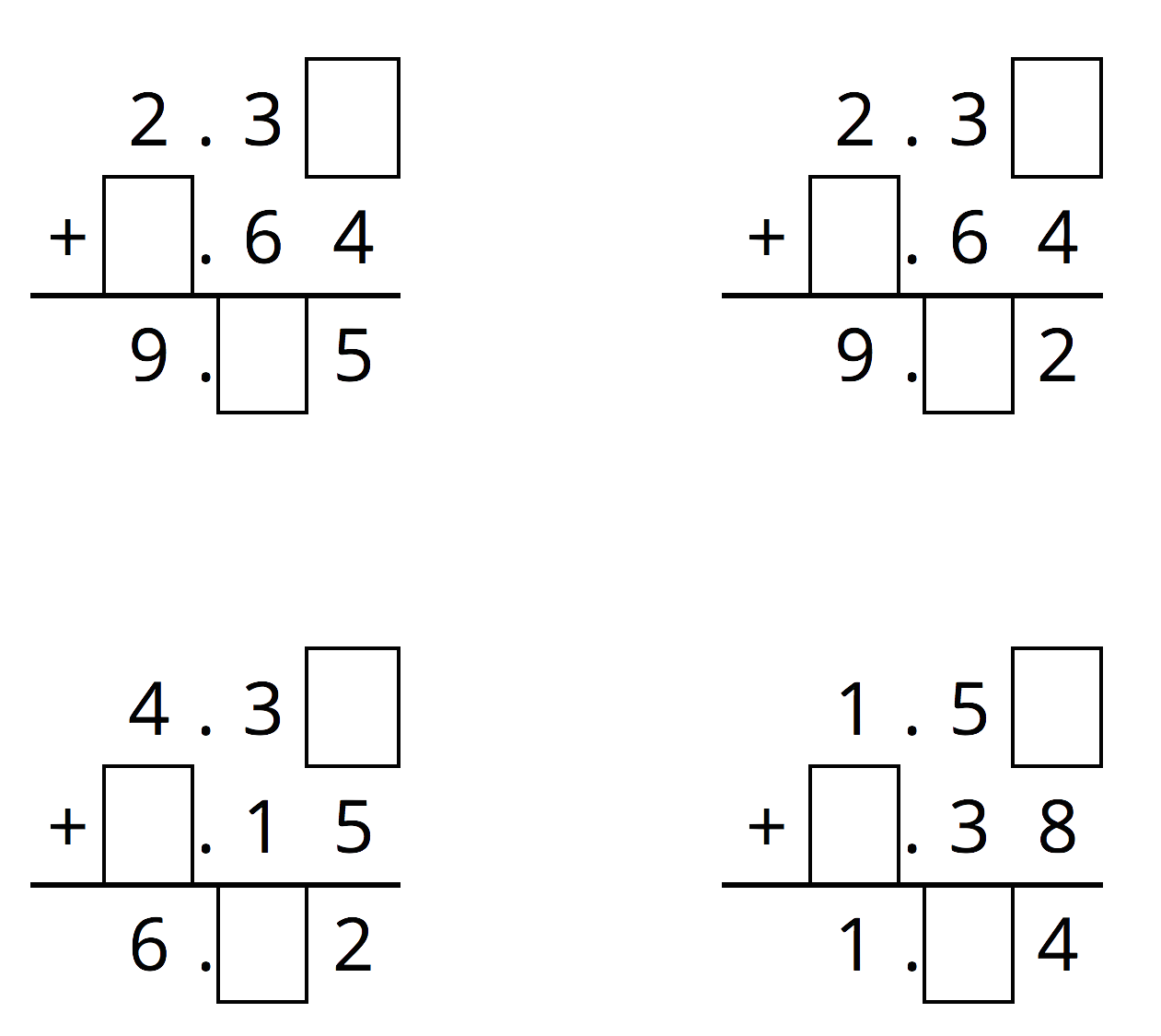Lesson 7
Using Diagrams to Represent Multiplication
Problem 1
Here is a rectangle that has been partitioned into four smaller rectangles.

For each expression, choose the sub-rectangle whose area, in square units, matches the expression.
- \(3 \boldcdot (0.6)\)
- \((0.4) \boldcdot 2\)
- \((0.4) \boldcdot (0.6)\)
- \(3 \boldcdot 2\)
Solution
For access, consult one of our IM Certified Partners.
Problem 2
Here is an area diagram that represents \((3.1) \boldcdot (1.4)\).

- Find the areas of sub-rectangles A and B.
- What is the area of the 3.1 by 1.4 rectangle?
Solution
For access, consult one of our IM Certified Partners.
Problem 3
Draw an area diagram to find \((0.36) \boldcdot (0.53)\). Label and organize your work so that it can be followed by others.
Solution
For access, consult one of our IM Certified Partners.
Problem 4
Find each product. Show your reasoning.
- \((2.5) \boldcdot (1.4)\)
- \((0.64) \boldcdot (0.81)\)
Solution
For access, consult one of our IM Certified Partners.
Problem 5
Complete the calculations so that each shows the correct sum.

Solution
For access, consult one of our IM Certified Partners.
(From Unit 5, Lesson 3.)Problem 6
Diego bought 12 mini muffins for $4.20.
- At this rate, how much would Diego pay for 4 mini muffins?
- How many mini muffins could Diego buy with $3.00? Explain or show your reasoning. If you get stuck, consider using the table.
| number of mini muffins |
price in dollars |
|---|---|
| 12 | 4.20 |
Solution
For access, consult one of our IM Certified Partners.
(From Unit 2, Lesson 12.)